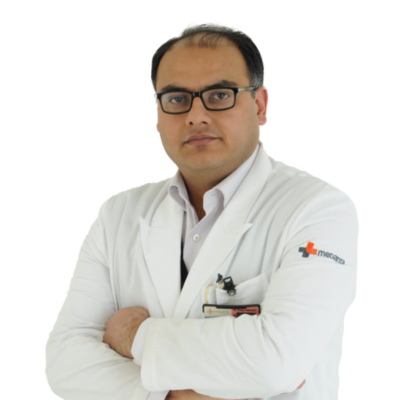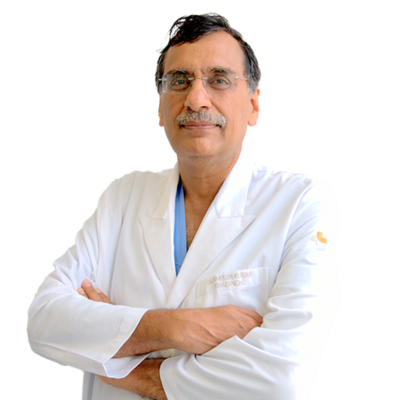The Role of Government Initiatives in Promoting Medical Tourism in India
 02 April,2025
Read More
02 April,2025
Read More
Enquire now in case of any assistance needed
Starting From: USD 800-4000
Procedure Type: Surgical Procedure
Hospitalization Days: - Days
Procedure Duration: 4-8 Hrs
Recovery Time: 1-3 Weeks
Success Rate: 98%
Hair Transplant is affordable in India. The cost of Hair Transplant in India lies between USD 800-4000. The exact procedure price depends on multiple factors such as the surgeon's experience, type of hospital, severity of the condition, patient's general condition,�etc.
Hair transplantation is a procedure where hair follicles are transferred from a donor site (often the back or sides of the head) to thinning or balding locations. This permanent solution for hair loss works by relocating DHT-resistant hair follicles to areas where hair has been lost, resulting in natural-looking, permanent hair growth. The treatment effectively corrects male and female pattern baldness, receding hairlines, and balding areas, restoring confidence and a more youthful look.
There are primarily four types of hair transplant procedures available in India:
Hair transplantation is suitable for individuals experiencing permanent hair loss who have sufficient donor hair to transplant. Ideal candidates include:
Men with androgenetic alopecia (male pattern baldness) with proven hair loss patterns such as receding hairlines, thinning of the crown, or diffuse thinning. The procedure is best for individuals with stable hair loss who are at least a Norwood Scale 3 or more.
Women who have female pattern hair loss, which is usually diffuse thinning over the scalp's crown with the frontal hairline's maintenance. The ideal candidates are those with good hair density on the back and sides of the head to act as donor sites.
Individuals who have lost hair as a result of accidents, burns, operations, or other physical injuries can be helped by hair transplantation to replace hair in scarred areas if there is sufficient blood supply to the involved area.
Individuals whose hair loss has plateaued (usually age 25+ for men) and who have realistic expectations regarding outcomes. The candidates should realise that the transplanted hair will grow over a period of 6-12 months and might need to have several sessions for maximum coverage.
People who are not afflicted with medical conditions that would impede healing or pose additional surgery risks. The best candidates are without any bleeding disorders, uncontrolled diabetes, or heart disease severe enough to complicate the surgery.
Hair transplant procedures in India are significantly more affordable than in Western countries. Here's a general pricing range:
|
Procedure |
Cost in INR |
Cost in USD |
|
FUT (Strip Method) |
60,000 - 1,50,000 |
800 - 1,900 |
|
FUE Method |
1,00,000 - 2,50,000 |
1,250 - 3,100 |
|
DHI Technique |
1,50,000 - 3,00,000 |
1,900 - 3,700 |
|
Bio-Enhanced Hair Transplant |
2,00,000 - 3,50,000 |
2,500 - 4,000 |
Note: Prices are typically calculated per graft (ranging from INR 25-100 per graft) or per session, depending on the clinic.
Several key factors affect the cost of hair transplant procedures in India. Understanding these elements helps patients make informed decisions about their treatment options.
The severity of baldness determines the number of grafts to be used, which is directly related to the price. Small patches that need 1,000-1,500 grafts will be significantly less expensive than widespread baldness that requires 3,000-5,000 grafts. Most clinics charge on a per-graft basis, with prices declining per unit as the total number increases.
The technique applied influences costs immensely. FUT (strip procedure) is more costly than FUE, and superior methods such as DHI and bio-fortified transplants cost more as a result of special devices, increased technical knowledge, and enhanced outcomes.
Most highly trained surgeons with special qualifications in hair restoration and vast experience will have higher prices. Those with global certifications from reputable organisations such as the International Society of Hair Restoration Surgery (ISHRS) or extensive before-and-after collections usually have premium prices that speak volumes about their qualifications and results.
Centres with high-tech equipment, rigorous sterilisation procedures, and international accreditations (such as JCI or NABH) tend to be more expensive than smaller clinics. These upscale centres tend to offer higher graft survival rates and improved overall results through their high-tech equipment and extensive care procedures.
Metropolitan towns such as Mumbai and Bangalore will generally charge more for hair transplants than tier-2 cities such as Jaipur or Chandigarh. This difference in cost is based on variations in real estate, operational costs, and market positioning of clinics in various areas.
The cost of hair transplants varies significantly across different Indian cities due to factors like local economic conditions, competition among surgeons, and standard of living. Here's an estimated breakdown of costs by major cities:
|
City |
Min Cost (INR) |
Max Cost (INR) |
Min Cost (USD) |
Max Cost (USD) |
|
Mumbai |
80,000 |
3,50,000 |
1,000 |
4,000 |
|
Delhi |
70,000 |
3,00,000 |
900 |
3,700 |
|
Bangalore |
75,000 |
3,20,000 |
950 |
3,900 |
|
Kolkata |
60,000 |
2,50,000 |
800 |
3,100 |
|
Hyderabad |
65,000 |
2,80,000 |
850 |
3,500 |
|
Chandigarh |
60,000 |
2,40,000 |
800 |
3,000 |
Note: Premium clinics and surgeons in metro cities typically charge on the higher end of the spectrum, while more affordable options are available in tier-2 cities.
Comparing hair transplant costs in India with other popular medical tourism destinations highlights the significant cost advantages while maintaining quality standards:
|
Country |
Cost Range (USD) |
|
India |
800 - 4,000 |
|
Thailand |
2,200 - 6,000 |
|
Turkey |
1,500 - 5,000 |
|
Singapore |
4,000 - 12,000 |
|
UAE |
3,500 - 10,000 |
|
Malaysia |
2,000 - 6,000 |
|
United States |
4,000 - 15,000 |
|
United Kingdom |
3,500 - 12,000 |
India offers among the most affordable hair transplant procedures globally, with costs up to 75% lower than in the United States, while maintaining international quality standards through accredited clinics and internationally trained surgeons.
When budgeting for a hair transplant, consider these additional costs:
The majority of medical insurance policies available in India do not cover hair transplant surgeries because they are normally regarded as cosmetic rather than medically unavoidable. Yet, where baldness occurs due to accidents, scalds, or diseases, partial coverage by some insurance companies is possible upon adequate documentation and prior approval.
To make the process cost-effective, most clinics provide EMI plans through which the cost is paid over 3 to 24 months. Some of these plans have zero interest payments for the initial 6 to 12 months. A few medical finance companies and banks also offer loans for cosmetic procedures with competitive interest rates, less documentation, and fast approval. Some of these clinics also have collaborations with finance companies, providing tailor-made payment schemes to deserving patients.
Foreign patients ought to investigate financing in their countries of origin, as most Indian clinics ask foreign visitors to pay in advance. Nevertheless, some medical tourism facilitators provide packages with instalment plans, inclusive of transplant fees, accommodation, travel, and post-procedure care. Patients are also advised to check the overall fee, including pre-surgery examination, medication, and follow-up visits, to limit surprises.
Consider these strategies to make your hair transplant more affordable without compromising quality:
Some of the reasons to choose MediJourney include:
Most clinics charge separately for follow-up visits, medications, and additional treatments like PRP therapy. Some offer all-inclusive packages that cover follow-ups for a specific period, so it's best to confirm before booking.
Hair transplant costs are usually calculated per graft, ranging from INR 25 - 100 (USD 0.30 - 1.25) per graft. The total expense increases with the number of grafts needed, meaning extensive baldness requires a higher budget.
Yes, many reputable clinics in smaller cities like Chandigarh, Jaipur, and Kochi offer high-quality hair transplants at lower costs compared to metro cities like Mumbai and Delhi due to lower operational expenses.
Vice Chairman
Cosmetic Surgeon
Medanta - The Medicity Hospital, Gurgaon
Book AppointmentDirector
Cosmetic Surgeon
Medanta - The Medicity Hospital, Gurgaon
Book AppointmentAssociate Director
Cosmetic Surgeon
Medanta - The Medicity Hospital, Gurgaon
Book AppointmentSenior Consultant
Cosmetic Surgeon
Medanta - The Medicity Hospital, Gurgaon
Book AppointmentChairman
Cosmetic Surgeon
Medanta - The Medicity Hospital, Gurgaon
Book AppointmentVice Chairman
Cosmetic Surgeon
Medanta - The Medicity Hospital, Gurgaon
Book AppointmentDirector
Cosmetic Surgeon
Medanta - The Medicity Hospital, Gurgaon
Book AppointmentAssociate Director
Cosmetic Surgeon
Medanta - The Medicity Hospital, Gurgaon
Book AppointmentSenior Consultant
Cosmetic Surgeon
Medanta - The Medicity Hospital, Gurgaon
Book AppointmentChairman
Cosmetic Surgeon
Medanta - The Medicity Hospital, Gurgaon
Book AppointmentVice Chairman
Cosmetic Surgeon
Medanta - The Medicity Hospital, Gurgaon
Book AppointmentDirector
Cosmetic Surgeon
Medanta - The Medicity Hospital, Gurgaon
Book AppointmentDoctor of Pharmacy
Dr. Deepanshu Siwach is a skilled clinical pharmacist with a Doctor of Pharmacy degree.?He has 4+?years of experience and has worked with thousands of patients. He has been associated with some of the top hospitals, such as Artemis Gurgaon.
Dr. Deepanshu Siwach is a skilled clinical pharmacist with a Doctor of Pharmacy degree.?He has 4+?years of experience and has worked with thousands of patients. He has been associated with some of the top hospitals, such as Artemis Gurgaon....
With over 23 years of experience, Dr. Vipul Nanda, an eminent Plastic and Cosmetic Surgeon, excels in surgical and non-surgical procedures, including filler, mesotherapy, laser, and dermatology....
The duration of the procedure depends on factors such as the extent of hair loss and the chosen technique. Generally, hair transplantation can take anywhere from a few hours to a full day. The surgeon provides a personalized estimate during the consultation.
The success rate of hair transplantation and restoration varies but is generally high. Factors such as the expertise of the surgeon, the patient's health, and adherence to post-operative care influence outcomes. Consultation with a qualified specialist provides personalized information.
Following hair transplantation, patients typically experience temporary swelling and discomfort, with scabbing and redness in the donor and recipient areas. Recovery varies but usually involves a few days of downtime before resuming normal activities. Post-operative care instructions should be followed diligently.
After hair transplantation, patients are typically provided with pain medication to manage any discomfort during the initial recovery period. Additionally, applying ice packs to the scalp and following the surgeon's recommendations for post-operative care can help alleviate pain and swelling effectively.
Following hair transplantation and restoration, most patients can resume light activities within a few days. However, strenuous exercise and activities should be avoided for at least a week to allow the scalp to heal properly. Patients can typically return to their normal activities within 7 to 10 days, depending on individual healing and the extent of the procedure.
The results of hair transplantation and restoration are usually permanent, as transplanted hair follicles are resistant to balding. However, the success and longevity of the procedure can vary depending on factors such as the patient's natural hair growth pattern, age, and overall health.
In most cases, hair transplantation and restoration surgery are considered cosmetic procedures and are not covered by insurance. However, patients should consult their insurance provider to determine if there are any exceptions or coverage options available based on medical necessity or specific circumstances.
After hair transplantation and restoration, maintaining a healthy lifestyle can promote optimal results. This includes avoiding smoking, which can hinder healing and affect hair growth. Additionally, following a balanced diet rich in nutrients and staying hydrated supports overall hair health. Patients should also protect their scalp from excessive sun exposure to prevent damage to newly transplanted hair follicles.
Yes, alternative treatments to hair transplantation include medications such as minoxidil and finasteride, which can help slow hair loss or stimulate hair growth in some individuals. Additionally, low-level laser therapy and platelet-rich plasma (PRP) therapy are non-surgical options that may improve hair density and thickness. However, results vary, and consultation with a specialist is recommended.
The Art of Effective Communication
 02 April,2025
Read More
02 April,2025
Read More
 27 March,2025
Read More
27 March,2025
Read More
 26 March,2025
Read More
26 March,2025
Read More
 22 March,2025
Read More
22 March,2025
Read More
 12 March,2025
Read More
12 March,2025
Read More
 24 January,2025
Read More
24 January,2025
Read More





